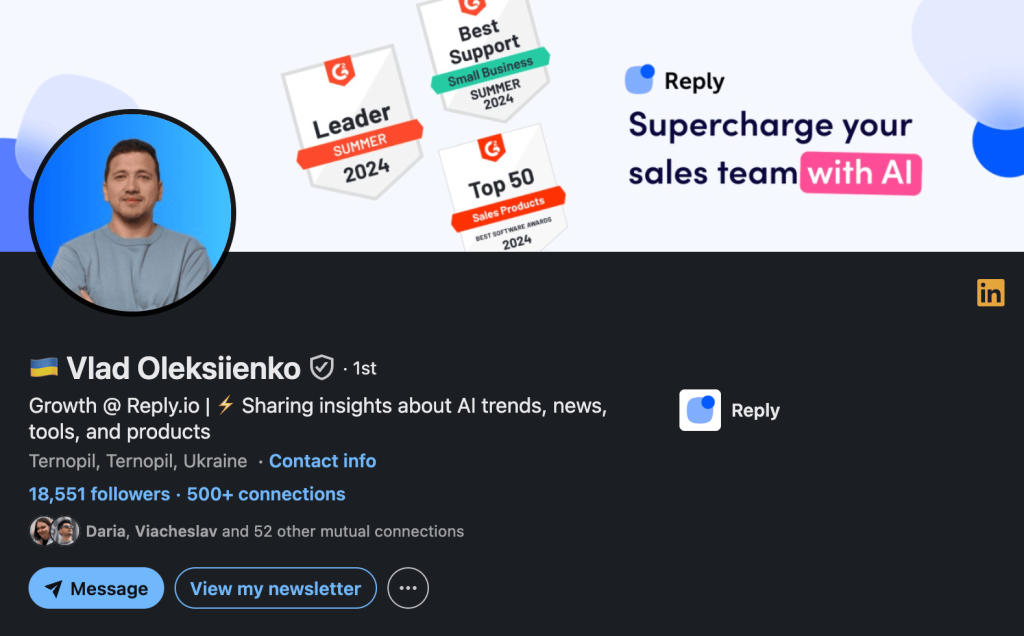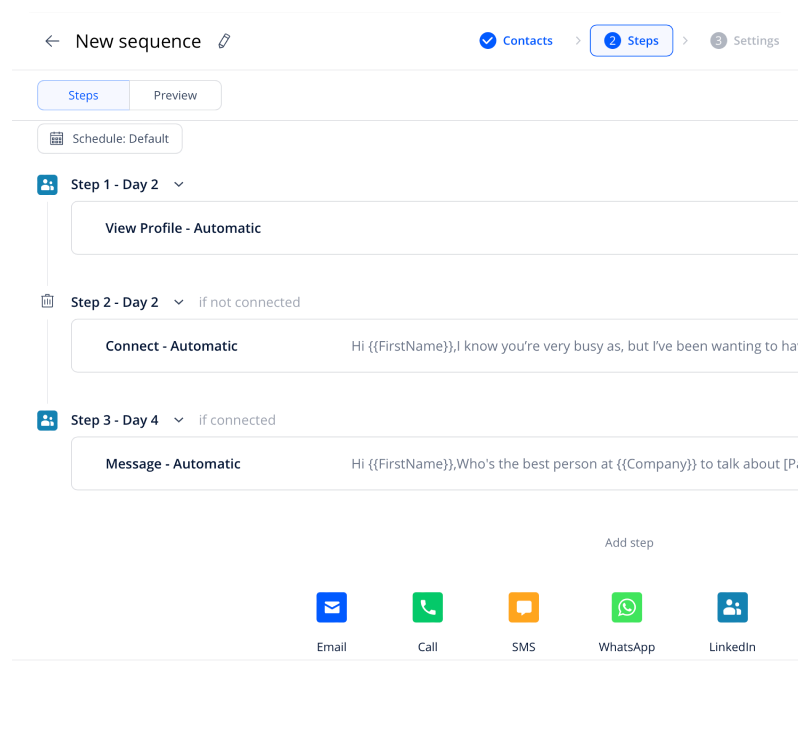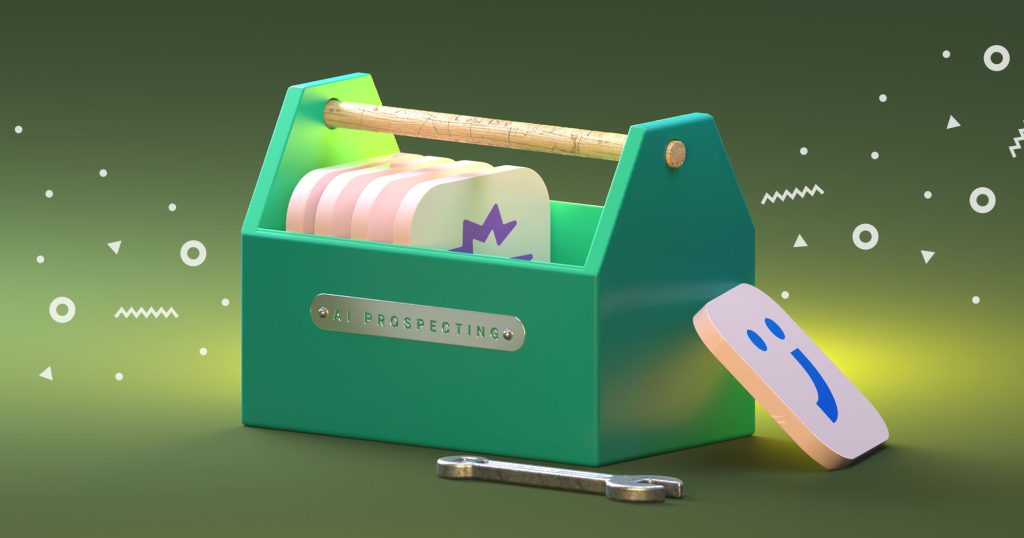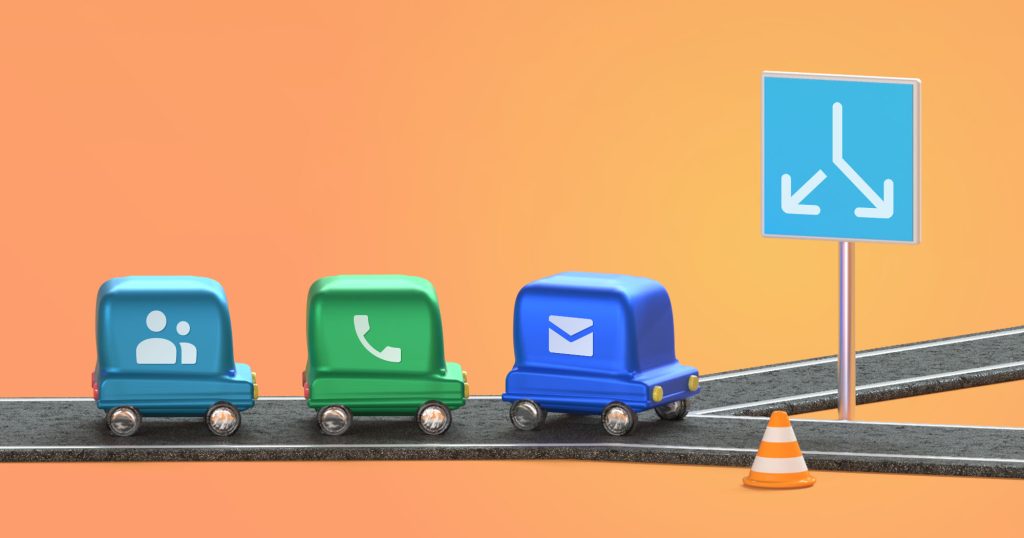
How to Increase Connections on LinkedIn REALLY Fast in 2025
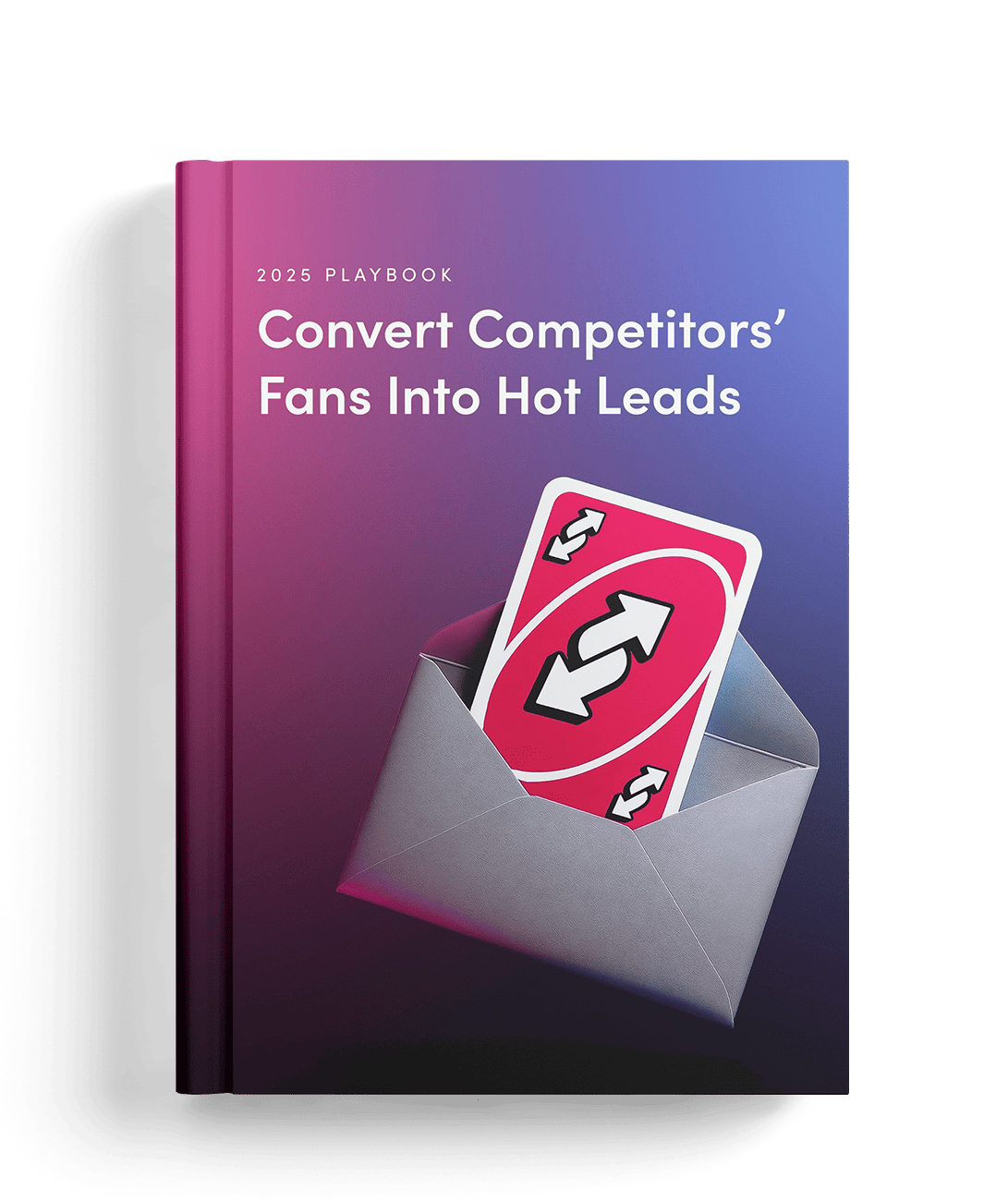
Why chase cold leads when warm ones are waiting?
Stop begging for attention. Start talking to people who already want what you sell.
Preparing your profile & strategy
Before discussing how to quickly increase connections on LinkedIn, it’s important to set a solid foundation for your networking game.
Optimize your profile
The first step is to properly optimize your LinkedIn profile to ensure that once somebody clicks on it, whether it’s after stumbling across your latest post or to check out who messaged them, they are inclined to answer.
Your LinkedIn profile is not just another social media page, it’s also your online CV and personal landing page. The second someone comes across it, they’ll be subconsciously asking themselves: “Does this person look credible?”.
On the contrary, a half-ready setup (blurry selfie, empty “About” section, etc.) will increase the likelihood of getting ignored, even by those who’d otherwise be a great fit, resulting in lost networking opportunities.
To make your profile scream credibility, you need clarity and proof:
- A clean, professional headshot, along with a visually appealing banner tied to your company, industry, or personal brand.
- A clear headline that goes beyond simply mentioning your role, instead explaining who you are, who you help, and how. For example, “Helping B2B teams cut prospecting time in half with [solution]” works much better than “SDR at CompanyName”.
- Your “About” section should feel like a pitch, without actually being one — short paragraphs, outcome-driven, written in plain English.
- Just as important is to stack social proof, be it recommendations, featured posts, case studies, or perhaps even a recent podcast appearance, all signaling that you’re worth engaging with.
Decide who to target
The second step is figuring out exactly who you’re trying to add to your network, because fast growth with random people is pointless.
Sure, you’ll grow the number of connections, but your posts won’t drive meaningful engagement, and your outreach efforts, be it to build a sales pipeline or grow your webinar attendees, will fall flat.
Get specific with your ICP — job titles, industries, company sizes, geographies, etc. Rather than simply saying “decision-makers in SaaS”, go for “Sales directors at mid-size SaaS firms in North America, 50–200 employees.” Ideally, leverage LinkedIn Sales Navigator to access advanced search filters.
With that level of precision, every tactic that we’ll discuss shortly will produce much better results down the line.
Warm up before scaling
The last part of the foundation is pacing your growth. Just like email warm-up is crucial to mass outreach, starting small and ramping up connection requests and messages on LinkedIn is just as important.
In 2025, LinkedIn has very little patience when it comes to sudden and random spikes in behavior.
So if you’ve had a dormant account with virtually no posts for a long time, and then start blasting 100 invites a day, you’re not just wasting effort but also risking getting your account restricted.
Start with 10 requests a day on week one, then 20 on week two, and by week three, you can safely hit those higher ranges. And don’t forget to mix in genuine activity along the way, such as liking and sharing posts and dropping thoughtful comments.
This isn’t all just for show or simply good in theory — it builds a healthy digital footprint that LinkedIn’s algorithm will allow to keep scaling.
How to increase your connections on LinkedIn fast
The foundation covered gets you ready, now it’s time for execution.
Below are the eight tactics that consistently
move the needle in 2025. Some are obvious, some are overlooked, and a few only work when you layer them with others. The key is to run several in parallel — don’t bet the farm on just one approach.
The Basics
If you’ve been on LinkedIn for years and only connected with people you personally work with, you’re leaving easy wins on the table. Start with the circles that already trust you.
Besides coworkers, searching for past colleagues and alumni is the fastest “yes” you’ll ever get on this platform.
These people will straight away recognize your name, college, or company, so they’ll click accept without any hesitation. And just like that, they’ve now given you access to their relevant second-degree reach.
At the same time, it’s also good practice to import contacts from your email or CRM tool. Anyone who’s already exchanged a message with you in another channel is primed to accept a LinkedIn request.
This stage might feel basic, but it sets momentum. A hundred fast, easy, but highly relevant connections immediately raise your visibility and create a natural base of activity before you start reaching further out.
Engagement and visibility tactics
In most cases, LinkedIn users won’t accept an invite from a complete stranger. They’ll often visit your profile first, and if they see a blank activity feed, that’s a dead end.
But if they see you regularly posting useful insights and engaging with others, that straight away shows credibility.
That’s why posting consistently, about two to four times per week, is the bare minimum if you’re serious about fast LinkedIn growth. Try switching up the post formats to see what works best — short texts with a blunt opinion, carousels and other visuals, even a quick video note.
Fun fact, it’s collectively agreed upon that LinkedIn’s algorithms prefer posts with some form of visuals, helping them get more reach.
And vice versa, don’t forget about engaging with other people’s posts. Being one of the first to leave a thoughtful comment on an industry leader’s post puts your name in front of hundreds or thousands of relevant eyes.
Some of those will click on your profile out of curiosity and perhaps send you a connection request, or at the very least, they’ll show up on your “Who viewed your profile” section (more on that later). It’s basically inbound growth disguised as outbound activity.
Personalized outreach
Sending blank invites is just plain lazy. If you want to actually connect with people, you need to write up an effective LinkedIn connection message along with every sent request. It doesn’t have to be deep or value-driven at this point, but it also shouldn’t sound like a bot.
The best formula is quite simple: reference something specific, make it about them, and keep it under 300 characters. Here are a few examples:
“Hi [Name], I noticed we’re both part of the [Community Name] group. I’d love to connect and exchange ideas, considering we both seem passionate about [specific topic/industry focus].”
“Hi [Name], I’ve been following your work in [field] for a while, and I’m particularly impressed by your recent [achievement]. It would be great to connect and learn more from your experiences.”
A short message like this will definitely boost your chances of getting your connection request accepted because it shows you actually took the time and interest.
After connection, it’s just as important to personalize your messages on LinkedIn, so don’t go blasting copy-pasted text to your new network, they will see right through it. Instead, take the time to tailor each conversation, whether it’s to talk business or simply discuss a mutual interest.
With the growing popularity of LinkedIn outreach tools that leverage AI to research LinkedIn profiles and personalize messages with that data, there’s simply no excuse for generic communications anymore.
Network expansion moves
Once you’ve got the ball rolling, the best connections now aren’t complete strangers that you have to search for, they’re the people already circling around you.
For starters, you can keep checking the “Who viewed your profile” section regularly. Whoever has already visited your profile is more likely to be at least somewhat interested in your niche, posts, and so on. Now, when you send that connection request, they will likely remember your name.
The same goes for the “People also viewed” sidebar that appears when browsing on relevant profiles. It’s an endless rabbit hole of people with similar roles, working in similar industries, or sharing expertise in similar niches.
Join relevant groups and events
LinkedIn groups aren’t quite what they used to be, but the right ones are still worth it. If your target audience hangs out in niche communities, joining them and occasionally contributing valuable posts, comments, and insights puts you in front of them without needing a direct invite.
Same goes for LinkedIn events, be it webinars, roundtables, or networking sessions. Drop thoughtful comments during the event, engage with attendees, and follow up with a connection request while you’re still fresh in their mind.
These tactics work because they’re contextual, not random. You’re not just another random profile but “the person I saw in that event chat” or “the one who posted in that group.” That little bit of familiarity makes acceptance far more likely.
Promote your LinkedIn profile
Fast growth isn’t only about what you do inside LinkedIn, it’s also about making it easy for people to find your profile everywhere else.
There are a couple of ideas here: add your profile link to your email signature, drop it on your company website, blog author bio, Instagram and Facebook bios, even your presentation slides.
These are all small touchpoints that can add up to a steady flow of new inbound requests over time, without you having to work for them. People already engaging with your content, company, or brand outside LinkedIn will naturally send a connection request when you make the path obvious.
In-person networking
This one feels old school, but it’s powerful because almost nobody does it well anymore. If you’re at a conference, local meetup, or even a small workshop, every person you meet should get a LinkedIn request that same day. Simple as that.
Strike while the memory is fresh, because waiting for a week or so turns into “Oh yeah, I remember you” or “Who’s this again?”
Connecting on LinkedIn right away after an in-person chat and handshake is still the most powerful way to build authentic networks in 2025, even when everything has become digitalized.
Metrics and feedback loops
The last tactic isn’t really about what you do but about how you measure it, and what changes you make based on those metrics.
If you don’t track the performance of your LinkedIn efforts, you’ll probably end up wasting time and potentially risk serious account restrictions.
Keep a close eye on acceptance rates — 30-50% is healthy, but if you’re dropping below 25%, you’re either targeting the wrong people or your invite notes are weak and don’t spark engagement.
Keep an eye out on your volume too. The safe ceiling is roughly 100 invites per week, and anything above that starts to trigger LinkedIn’s alarms. And finally, clean your pending list every month (hundreds of unanswered invites make you look spammy in LinkedIn’s eyes).
Think of this as simple hygiene, because fast growth is only good if it’s sustainable.
How to use automation to grow LinkedIn connections fast
Manually growing your connections on LinkedIn works just fine, but it gets exhausting. Finding the right profiles, sending invites, following up, tracking who replied and who didn’t, staying on top of posts and groups — that will inevitably take up many hours from your workweek.
And if your main priority is speed and efficiency, this is where automation can really make the difference. LinkedIn automation tools bring consistency, efficiency, and scale, freeing up your time to actually build meaningful connections with your network.
Let’s see how that works in practice with an AI-powered platform like Reply.io:
- You build targeted lists with relevant LinkedIn users, whether it’s by importing your existing contacts or leveraging its native lead database containing over 1billion leads.
- At the same time, AI learns your target audience and continuously works in the background, looking for new professionals to add to the list.
- You launch multi-touch sequences with automated profile visits and connection requests, all intelligently spaced over time.
- Whether it’s for those short connection request messages, DMs, or InMail, Reply’s AI will research each individual contact to craft hyper-personalized initial messages, along with automated follow-ups.
- To make outreach more effective, users can supplement those LinkedIn touches with emails, also personalized with AI-driven research, to spark better engagement.
Automation platforms like Reply are also very familiar with LinkedIn’s algorithms, so you can rest assured that the volume of connection requests and messages will always be spaced out safely.
The real power comes from combining the powers of AI-powered LinkedIn automation, as described above, with the authentic human touch. Software can handle all the grunt work, but nothing beats a truly thoughtful conversation, which is what LinkedIn is all about.
Common pitfalls and how to avoid them
If LinkedIn growth were as easy as sending more invites, everyone would have 20,000+ connections by now. While we’ve covered the top proven tactics on growing your connections, it’s often the common, predictable traps that prevent most people from achieving those results:
1. Chasing numbers over relevance:
It’s tempting to connect with anyone who’ll accept your request just to see your count go up, but an inflated, irrelevant network doesn’t help you. Your posts will hit the wrong feeds, your outreach won’t land, and your credibility will take a big hit in the long run. Ten professionals who actually fit your target audience are worth more than a hundred random “contacts.”
2. Copy-paste invites:
Generic “let’s connect” requests still exist, but in 2025, they’re a waste of limited characters. These kinds of messages with no personalization will tank your acceptance rate and raise red flags. Even one line of context makes a huge difference, for instance: “Saw your post on [X]” or “Fellow SaaS marketer” feels much more personal than “I’d like to add you to my network.”
3. Over-automation without authenticity:
Automating tasks like research, profile visits, connection requests, and even initial messages (as long as they’re personalized with AI) is fine, but authenticity is what will really help you build connections with your network. Post-connection conversations, post/topic discussions in groups, and so on — those are the places where AI and automation should stay away from!
4. Ignoring post-connection engagement:
Getting the acceptance is a win, but it’s just step one in the grand networking scheme. If you never interact with the person again, that connection will unlikely result in any fruitful introductions, partnerships, or networking opportunities down the line. So take some time to like their posts, drop comments, and send a short “congrats” on their new promotions.
Closing thoughts
A lot of people simply type into Google: “how to increase my connections on LinkedIn” and then follow a few dangerous tips like adding as many people as possible, or joining groups that contain thousands of LinkedIn users who accept all requests (for a fee, of course), and so on.
But the only real way to grow your LinkedIn network fast but also safely is a well-structured strategy.
So build the right foundation with a solid profile and narrow target audience, apply the above-mentioned tactics, and gear up with a reliable automation tool like Reply.io.
And always remember, LinkedIn growth is about both speed and sustainability. Grow too slowly and you miss opportunities, but grow recklessly and you risk serious restrictions (believe me, they are virtually impossible to get out of).
Nail the balance, and you’ll not only see your connections grow, but you’ll also enjoy the ripple effects in visibility, conversations, and opportunities.
Subscribe to our blog to receive the latest updates from
the world
of sales and marketing.
Stay up to date.

